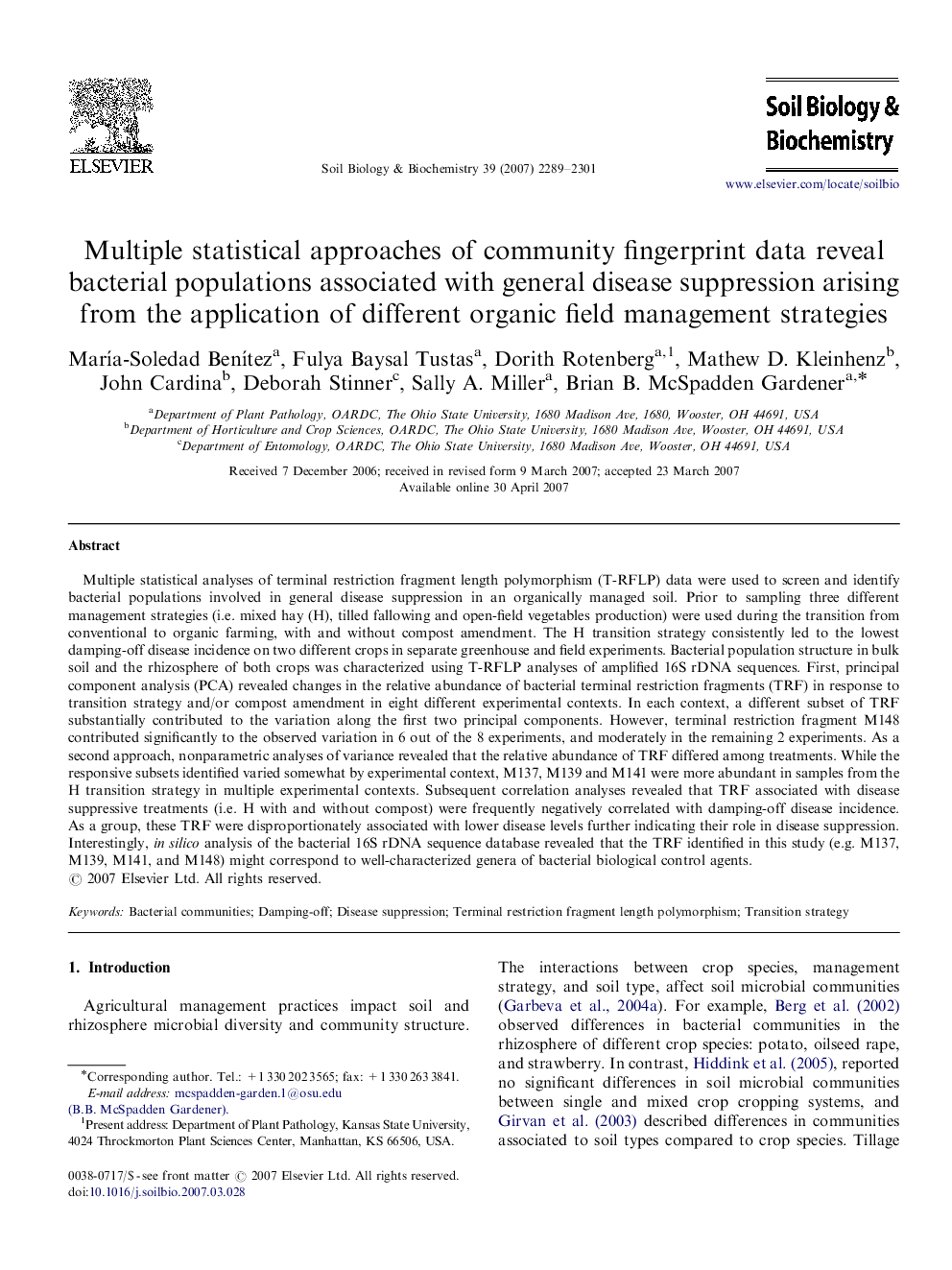| Article ID | Journal | Published Year | Pages | File Type |
|---|---|---|---|---|
| 2026185 | Soil Biology and Biochemistry | 2007 | 13 Pages |
Multiple statistical analyses of terminal restriction fragment length polymorphism (T-RFLP) data were used to screen and identify bacterial populations involved in general disease suppression in an organically managed soil. Prior to sampling three different management strategies (i.e. mixed hay (H), tilled fallowing and open-field vegetables production) were used during the transition from conventional to organic farming, with and without compost amendment. The H transition strategy consistently led to the lowest damping-off disease incidence on two different crops in separate greenhouse and field experiments. Bacterial population structure in bulk soil and the rhizosphere of both crops was characterized using T-RFLP analyses of amplified 16S rDNA sequences. First, principal component analysis (PCA) revealed changes in the relative abundance of bacterial terminal restriction fragments (TRF) in response to transition strategy and/or compost amendment in eight different experimental contexts. In each context, a different subset of TRF substantially contributed to the variation along the first two principal components. However, terminal restriction fragment M148 contributed significantly to the observed variation in 6 out of the 8 experiments, and moderately in the remaining 2 experiments. As a second approach, nonparametric analyses of variance revealed that the relative abundance of TRF differed among treatments. While the responsive subsets identified varied somewhat by experimental context, M137, M139 and M141 were more abundant in samples from the H transition strategy in multiple experimental contexts. Subsequent correlation analyses revealed that TRF associated with disease suppressive treatments (i.e. H with and without compost) were frequently negatively correlated with damping-off disease incidence. As a group, these TRF were disproportionately associated with lower disease levels further indicating their role in disease suppression. Interestingly, in silico analysis of the bacterial 16S rDNA sequence database revealed that the TRF identified in this study (e.g. M137, M139, M141, and M148) might correspond to well-characterized genera of bacterial biological control agents.
